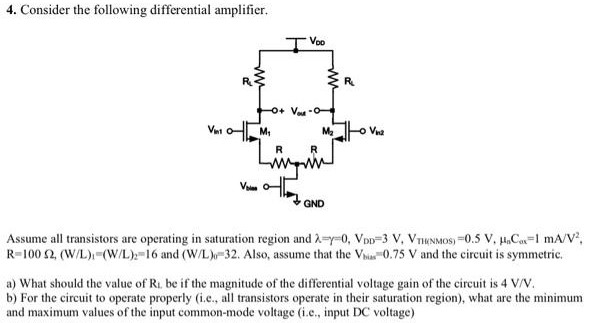Consider the following differential amplifier. Assume all transistors are operating in saturation region and λ = γ = 0, VDD = 3 V, VTH(NMOS) = 0.5 V, μnCox = 1 mA/V2, R = 100 Ω, (W/L)1 = (W/L)2 = 16 and (W/L)0 = 32. Also, assume that the Vbias = 0.75 V and the circuit is symmetric. a) What should the value of RL. be if the magnitude of the differential voltage gain of the circuit is 4 V/V. b) For the circuit to operate properly (i.e., all transistors operate in their saturation region), what are the minimum and maximum values of the input common-mode voltage (i.e., input DC voltage)



You'll get a detailed, step-by-step and expert verified solution.
 Work With Experts to Reach at Correct Answers
Work With Experts to Reach at Correct Answers